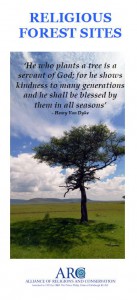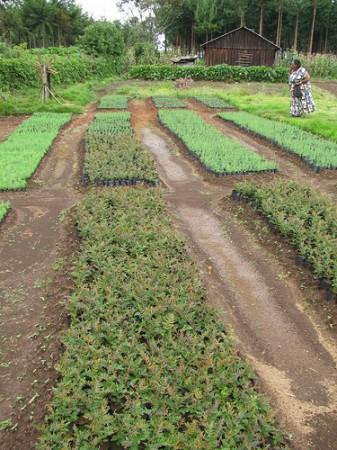- The impact of distance and a shifting temperature gradient on genetic connectivity across a heterogeneous landscape. Climate change bringing formerly genetically isolated populations together, possibly increasing adaptive potential.
- Intra-varietal genetic diversity of the grapevine (Vitis vinifera L.) cultivar ‘Nero d’Avola’ as revealed by microsatellite markers. 15 distinct genetic group among 118 plants from 30 Sicilian vineyards seems quite a lot.
- Emerging cultivation of oregano in Sicily: Sensory evaluation of plants and chemical composition of essential oils. More from Sicily. Wild is best.
- Effect of vineyard-scale climate variability on Pinot noir phenolic composition. Its complicated. But at least Pinot noir is not like Nero d’Avola. Or is it? Oh, crap.
- Landraces in Inland areas of the Basilicata region, Italy: monitoring and perspectives for on farm conservation. “Farmer-maintainers” of landraces tend to be old and isolated. Interesting stratified sampling strategy. Basilicata? They grow horseradish there, don’t they? They do indeed.
- Critical distances: Comparing measures of spatial accessibility in the riverine landscapes of Peruvian Amazonia. GIS-calculated time-based accessibility influences rural livelihoods and land use pressure. And agrobiodiversity? Apply to Basilicata next?
- A morphological assessment system for ‘show quality’ bovine livestock based on image analysis. Image of side of animal fed through neural network almost as good as experts in determining how beautiful the animal is. well there’s a triumph for science.
- Endosymbionts and honey bee colony losses? Something else to add to the list of possible causes of colony collapse disorder.
- Commercial teas highlight plant DNA barcode identification successes and obstacles. About a third of products revealed signatures of stuff that was not listed in the ingredients, but that could be due to a number of reasons.
- What would happen to barley production in Finland if global warming exceeded 4°C? A model-based assessment. Nothing good, surprisingly. Better get some new varieties, I guess.
- Cajanus platycarpus (Benth.) Maesen as the donor of new pigeonpea cytoplasmic male sterile (CMS) system. Gotta love those CWRs.
- Australia’s Stock Route Network: 1. A review of its values and implications for future management. Established for movement of livestock before trucks and trains, but has lots of endangered species and communities. Great value on many fronts, in fact. Needs proper governance though.
- Should forest restoration with natural hybrids be allowed? Yep.
Nibbles: Agroforestry, Maize breeding, Sorghum diversity, Wine sustainability, Soybean diversity, Permaculture
- Mexico Promotes Agroforestry For Arid Areas.
- How to pollinate sweetcorn, because you can never have too many how-tos.
- Diverse sorghums for diverse uses in Burundi.
- Watch out for carbon-footprint labels on your wine.
- Looking for dynamite soybean diversity? Go to Sweden. Really.
- The New York Times discovers permaculture. h/t Mauri.
Mapping sacred sites
 A short piece in The Times of India 1 pointed me to a longer version of basically the same press release on an interesting project to map the sacred forests of the world. This is a collaboration between the Oxford Biodiversity Institute and the Alliance for Religion and Conservation (ARC), the latter of which is new to me. Worth keeping an eye on. Unfortunately none of the players involved seem to have heard of RSS.
A short piece in The Times of India 1 pointed me to a longer version of basically the same press release on an interesting project to map the sacred forests of the world. This is a collaboration between the Oxford Biodiversity Institute and the Alliance for Religion and Conservation (ARC), the latter of which is new to me. Worth keeping an eye on. Unfortunately none of the players involved seem to have heard of RSS.
Nibbles: Frogs, Sacred forests, Heirloom onions, Lobster, Przewalski’s horses, Marco Polo sheep
- Eating frog legs is bad. France surrenders.
- Oxford boffins to map world’s sacred forests.
- Lafort onion: from the Wellesbourne genebank to Irish Seed Savers to urban kitchen garden.
- Lobster 101.
- A wild relative in trouble any way you slice it.
- And one that gets around. Didn’t we blog about this before? Yep.
Gender inequity in agroforestry seed supply
 You may remember that in
You may remember that in last this week’s Brainfood we linked to a paper which looked at agroforestry input supply systems, and recommended a commercial, decentralized model for getting high quality tree seeds to smallholders. Now I’ve come across “Gender and agroforestry in Africa: a review of women’s participation.” The bottom line — not surprisingly, alas — is that women’s participation tends to be lower in enterprises in which there’s more money at stake. But this second paper only looked at the outputs, not the inputs. It would be interesting to know whether women tend to be edged out of commercial tree seed supply enterprises too. I suspect they do, which suggests that following the recommendation of the first paper for tree seed supply systems might result in even more pronounced gender inequity. So what could be done about it? Both papers include ICRAF staff as co-authors, though there’s no overlap. Maybe some of them have already thought about this and might like to comment here.